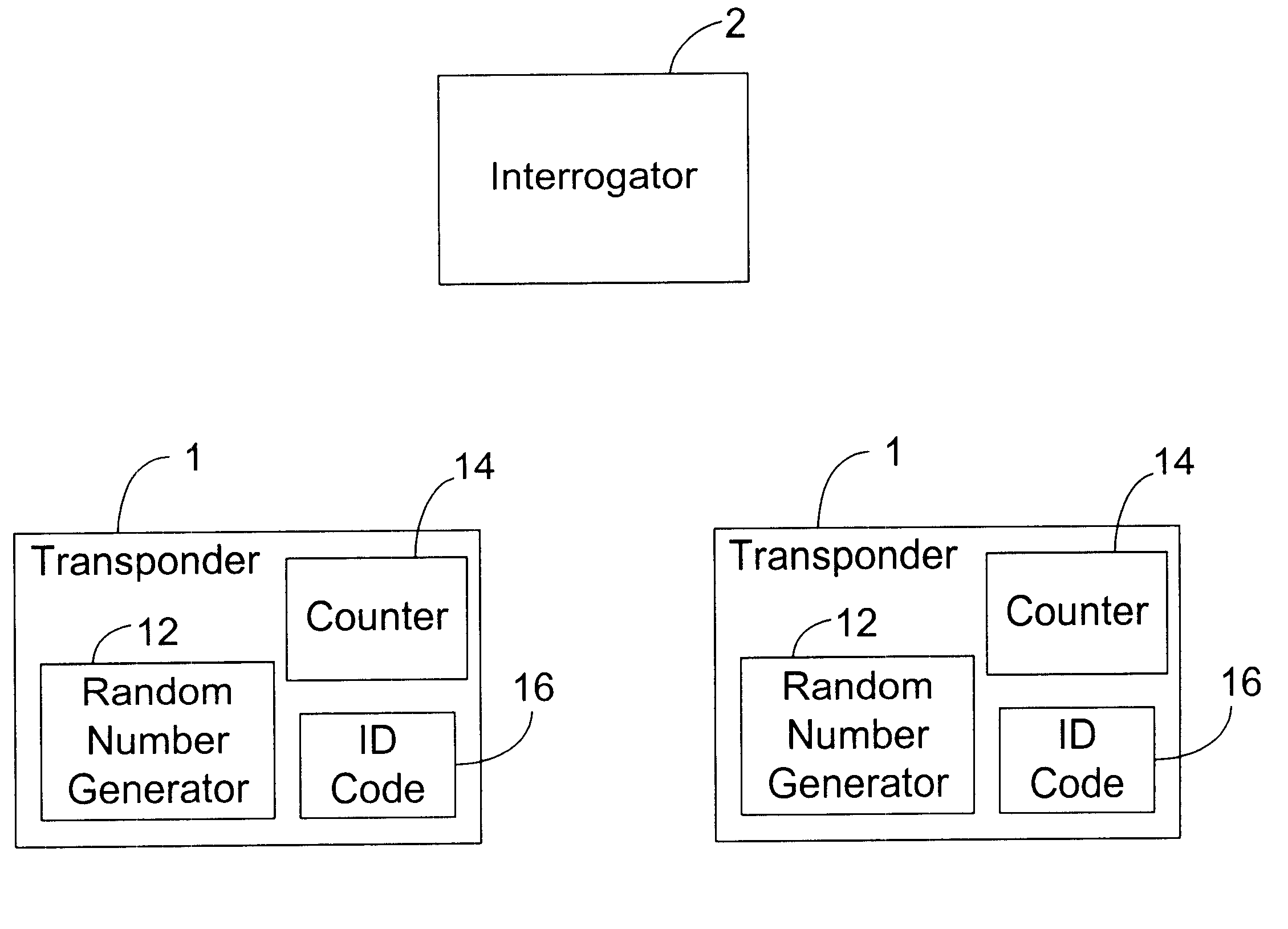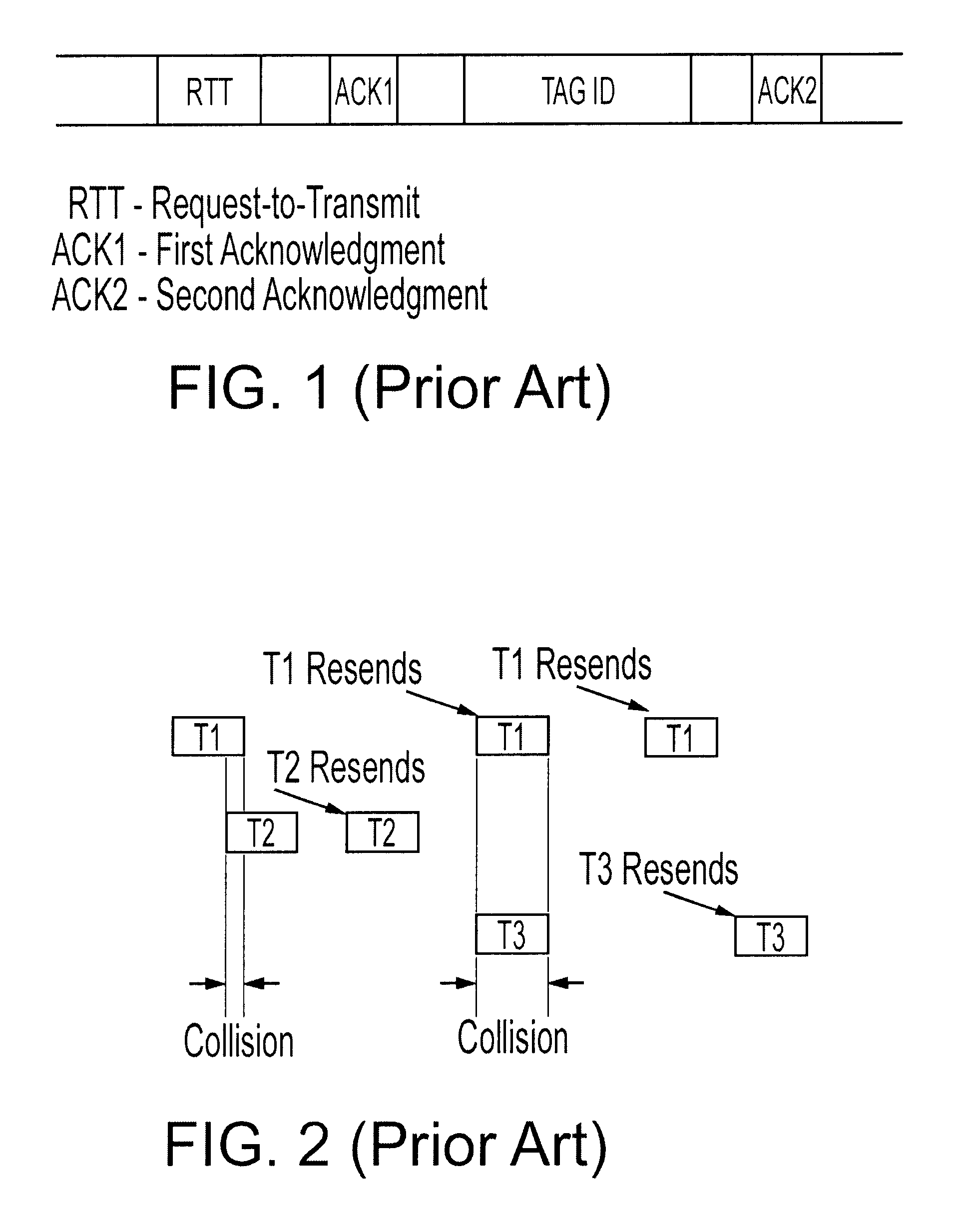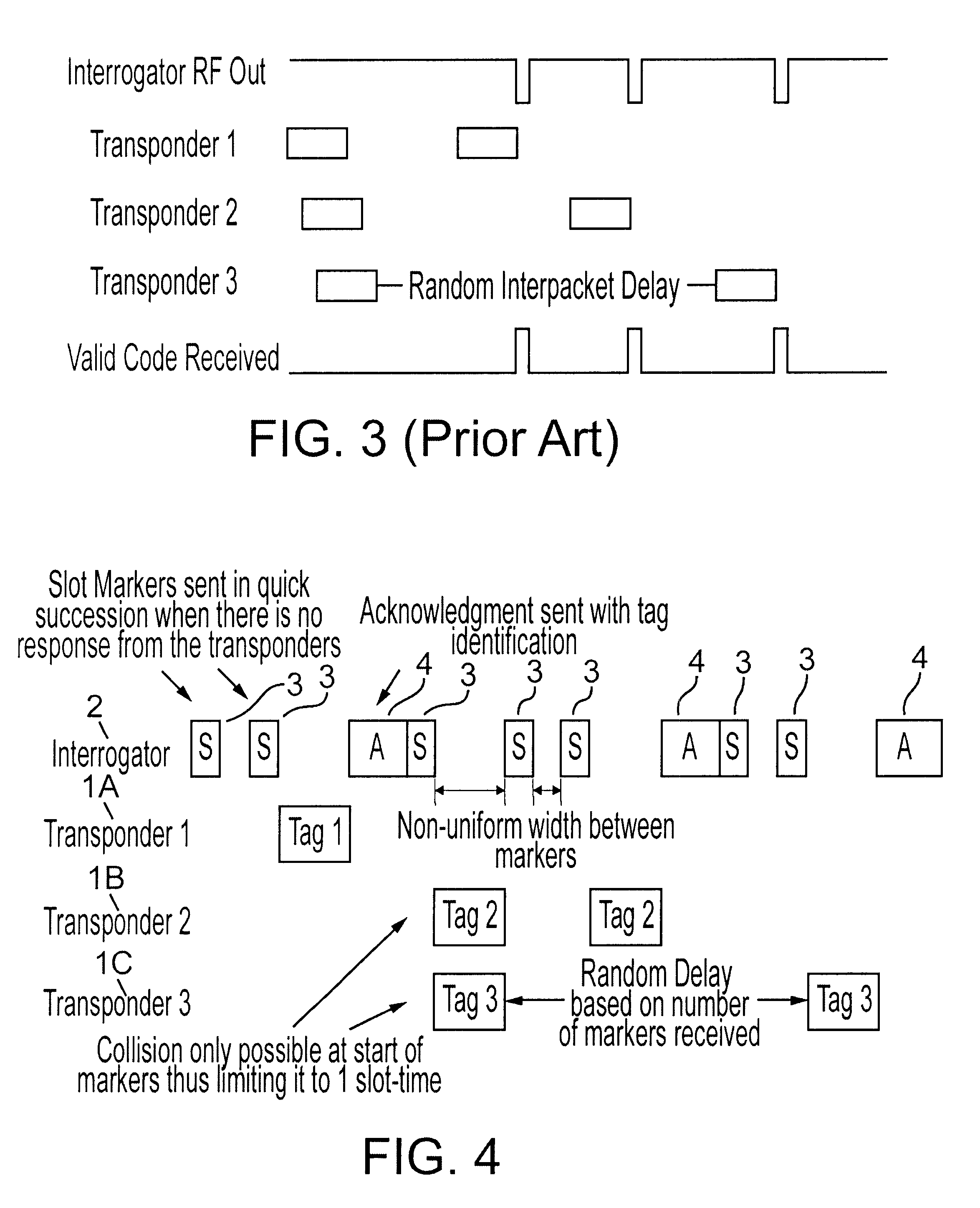RF transponder identification system and protocol
a transponder identification and radio frequency technology, applied in the direction of burglar alarm mechanical actuation, using reradiation, instruments, etc., can solve the problems of inconvenient system for medium access techniques, inability of transponders to detect the presence of other transponders, and limited processing capacity of remote stations, so as to improve the system performance and increase the probability of collisions
- Summary
- Abstract
- Description
- Claims
- Application Information
AI Technical Summary
Benefits of technology
Problems solved by technology
Method used
Image
Examples
Embodiment Construction
The present invention seeks to provide a protocol or method of identifying or communicating with a plurality of radio frequency (RF) transponders 1 in an electromagnetic field which is controlled by a reader or interrogator 2. The interrogator 2 produces RF signals which are received by all the transponders 1. The transponders 1 are preferably passive components having no power supply of their own and rely upon the received RF signal from the interrogator 2 to power any transmission back to the interrogator 2 so as to identify the transponder 1.
Referring to FIG. 4, the interrogator 2 transmits a plurality of RF signals in time slots of non-uniform duration. These signals are termed slot markers 3 in that the end of the transmission of each slot marker 3 designates a slot within which a transponder 1 can send a signal back to the interrogator 2 to identify the transponder 1.
As illustrated in FIG. 8, each of the transponders 1 includes circuitry to generate a random number 12 and furt...
PUM
 Login to View More
Login to View More Abstract
Description
Claims
Application Information
 Login to View More
Login to View More - R&D
- Intellectual Property
- Life Sciences
- Materials
- Tech Scout
- Unparalleled Data Quality
- Higher Quality Content
- 60% Fewer Hallucinations
Browse by: Latest US Patents, China's latest patents, Technical Efficacy Thesaurus, Application Domain, Technology Topic, Popular Technical Reports.
© 2025 PatSnap. All rights reserved.Legal|Privacy policy|Modern Slavery Act Transparency Statement|Sitemap|About US| Contact US: help@patsnap.com



